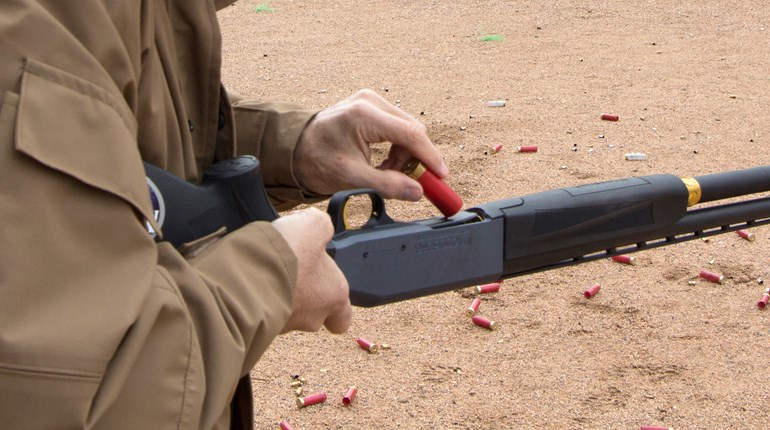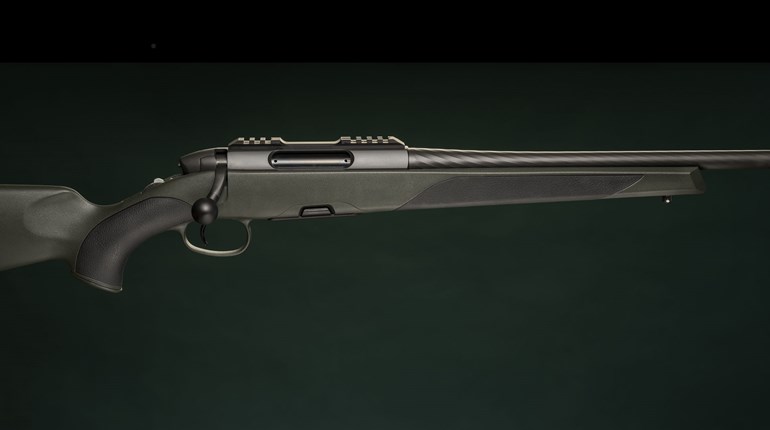
“I’ll just use birdshot.”
I hear it all the time when people talk about shotguns and overpenetration. It’s as if there is nothing to debate, as if there is only one type of birdshot. Rather than use buckshot—which is proven to be a better defensive option—they cling to the notion that birdshot will magically stop at certain barriers.
While it’s entirely possible folks like us overthink this stuff, that’s what we do here at SI. So, let’s part the weeds and delve in.
First, what exactly is birdshot?
Traditionally the term means any low-brass (or standard-velocity) shell containing small shot sizes of around No. 8. Plenty of hunters shoot small upland birds with Nos. 6, 7.5 and even 9 shot, but No. 8 tends to be the most popular. Why? It’s likely because quail and dove hunters find it to be the best combination of energy vs. pattern density for taking these flighty creatures at common wingshooting distances (10 to 40 yards).
Regarding 12-gauge birdshot loads, typically they come in two versions: 2 3/4-inch “light” 1-ounce loads and 2 3/4-inch “heavy” 1 1/8-ounce loads, although you can often find even heavier 1 1/4-ounce, No. 6 shot loads commonly used for squirrels and pheasants. The weight refers to the amount of shot, or payload, each shell contains. As with all ammunition, the more massive the payload and the faster it goes, the more damage it does to the target.
Why Birdshot for Home Defense?
The main reason given for opting for birdshot over buckshot is because birdshot isn’t as powerful downrange. (After all, buckshot is called buckshot because its load of nine, .33-inch-diameter pellets are each individually capable of killing a deer out to 50 yards or so.) The theory is that birdshot will stop an attacker near the end of the sofa, but won’t blow through both sides of a sheetrock wall and accidentally injure a family member on the other side. But, is that true?
Recently I tested an average, 1-ounce, No. 8 load against an insulated, sheetrock wall using cylinder choke. Here’s what I found:
At 20 yards, No. 8 shot did not penetrate both sides of the wall. At 10 yards it penetrated the wall and went on to strike a cardboard mannequin wearing a T-shirt. The pellets only made slight indentations in the cardboard, indicating it would likely not cause severe harm to a human. At 5 yards it penetrated both sides of the wall and the cardboard mannequin. Now, unless your last name is Bezos, you’re unlikely to have a 20-yard stretch in your house; 5 yards is far more common for a defensive distance in the home. Knowing this, do you still think birdshot won’t pose a danger?
The conclusion here is that in a 1-ounce load of No. 8 birdshot, after about 7 yards when it starts to spread and behave less like a solid mass, each individual pellet rapidly loses energy. Think about a typical home, though—most don’t have that kind of distance inside. Also, it can be extrapolated that heavier, No. 7.5 pellets penetrate slightly more than No. 8s, No. 6 pellets penetrate slightly more than 7.5s and so forth. (It’s a myth that smaller pellets will penetrate more than larger pellets going the same velocity; it would be true if these pellets were pushed by an outside force such as someone using a stick to push them through the target, rather than via their own momentum.)
Anecdotally, I can tell you this: I’ve been peppered several times with No. 8 shot at approximately 60 yards while bird hunting, and though it stung, it did not break my sleeve-covered skin. But, I have shot turkeys with No. 6 shot at 60 yards on several occasions, where it penetrated their skin and skulls, quickly killing them. Mathematically, at 20 yards a No. 8 pellet launched at 1,300 fps has 1.7 ft.-lbs. of energy, while the No. 6 shot has 3.7 ft.-lbs.—more than double the energy. That’s big.
Knowing the whole reason for choosing birdshot over buckshot is to theoretically minimize the risk of collateral damage beyond walls and at longer distances, is there any reason to use heavy birdshot with larger pellets such as No. 6?
There are two reasons for doing so, one of which is very valid. First is for the guy who wants more power to neutralize threats, possibly those at a distance a little longer than the 10- to 15-yard max range of No. 8 shot. For this guy, No. 6s might be an option. But, of course, it comes at the cost of more possible collateral damage, especially at the closer ranges found inside most homes.
The second reason, and one that has more validity, is that many semi-automatic shotguns, despite the manufacturer’s claims, do not function reliably when used with the lightest 1-ounce loads. So, if your home-defense shotgun is a semi-auto—and you insist on birdshot rather than buckshot—test light loads first and strongly consider using the heaviest birdshot load you can find to mitigate the chances of a jam. I’d even suggest using 11/4-ounce No. 6s (8s if you can find or handload them) if 1 1/8-ounce loads don’t function with 99-percent reliability.
If you’re still planning on using light birdshot in the belief it won’t penetrate walls and harm others on the other side, think again. Even at a distance of 10 yards, which is pretty rare inside a home, there’s still the possibility any shot that misses the bad guy will find its way into another room with enough power to cause harm to innocent bystanders.
Finally, if you want to be able to reliably stop an attacker inside the home, stick with buckshot. Light birdshot loads that don’t penetrate deeply are unlikely to stop a determined attacker and can still pose a significant danger to others at short ranges, especially those found inside most homes. If the reason you are considering birdshot is the misguided thought it will mitigate overpenetration, a better way to ensure against having pellets miss the target is to get professional training and practice with your defensive shotgun.






































